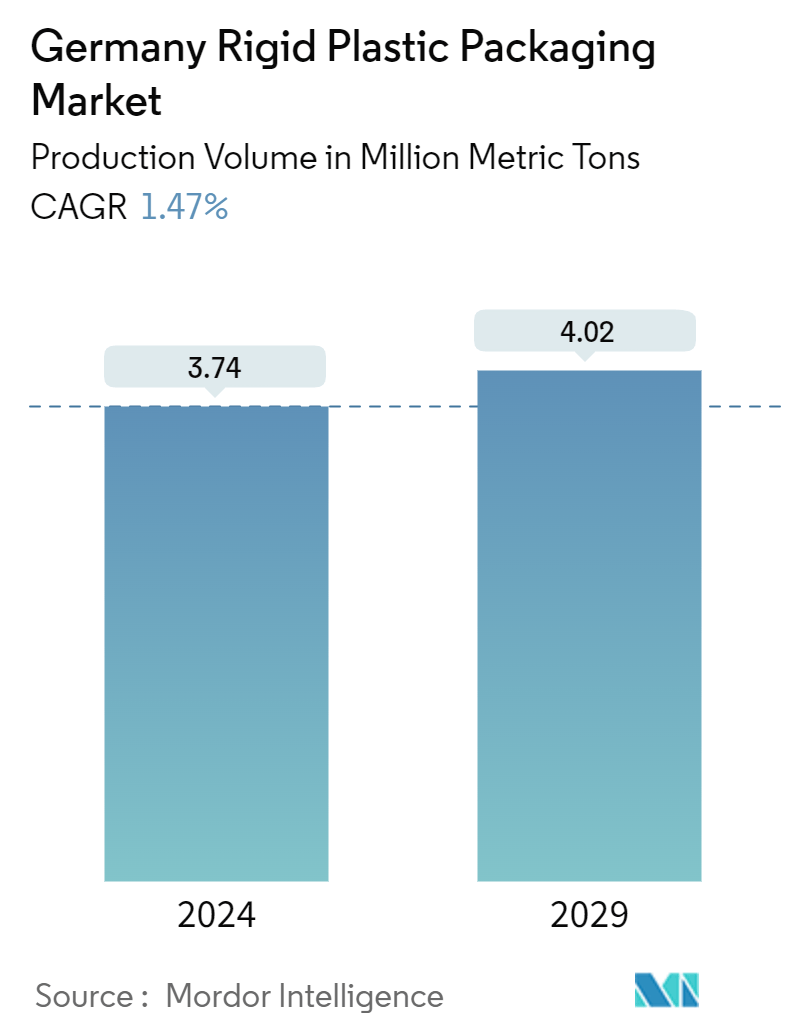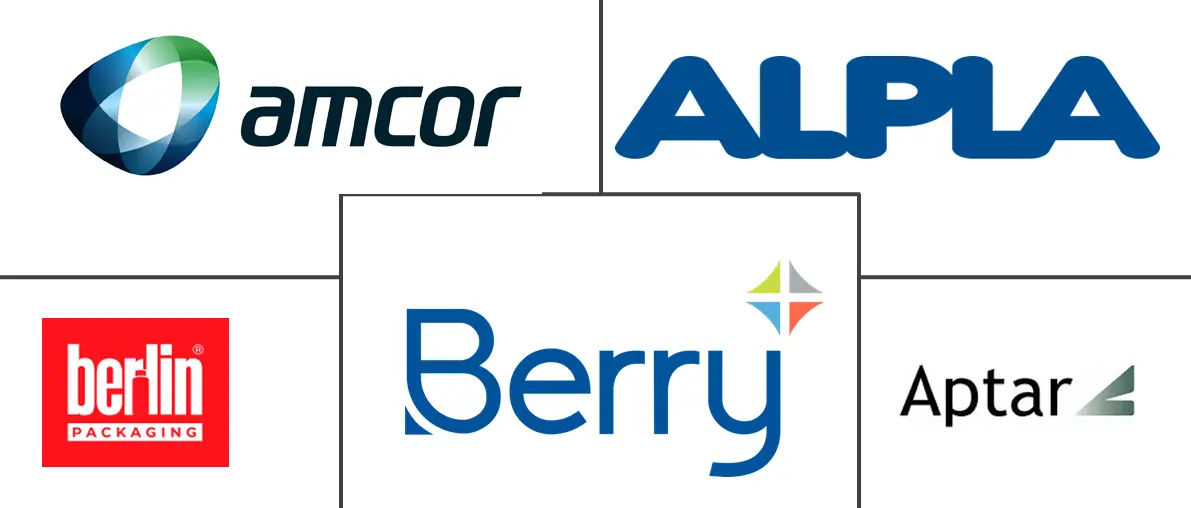Market Size of Germany Rigid Plastic Packaging Industry

| Study Period | 2019 - 2029 |
| Base Year For Estimation | 2023 |
| Forecast Data Period | 2024 - 2029 |
| Historical Data Period | 2019 - 2022 |
| CAGR (2024 - 2029) | 1.47 % |
| Market Concentration | Medium |
Major Players
*Disclaimer: Major Players sorted in no particular order |
Germany Rigid Plastic Packaging Market Analysis
The Germany Rigid Plastic Packaging Market size in terms of production volume is expected to grow from 3.74 Million metric tons in 2024 to 4.02 Million metric tons by 2029, at a CAGR of 1.47% during the forecast period (2024-2029).
- Germany's rigid plastic packaging landscape is diverse and dynamic, applicable to a wide range of industries. Rigid plastic packaging products include bottles, containers, trays, tubs, IBCS, crates, and pallets, which are extensively used across various sectors, such as food and beverages, pharmaceuticals, personal care, and household products. These packaging solutions offer durability, protection, and convenience, making them a preferred choice for many end users.
- Rigid plastic packaging can be categorized into primary, secondary, and tertiary. Primary packaging directly contacts the product, such as beverage bottles and food items containers. Secondary packaging groups primary packages together, like crates of beverage bottles. Tertiary packaging, including crates and pallets, is used for bulk handling and shipping.
- The materials used in rigid plastic packaging vary, with common options including polyethylene terephthalate (PET), high-density polyethylene (HDPE), polypropylene (PP), and polystyrene (PS). Each material offers unique properties that make it suitable for specific applications. For instance, PET is widely used for beverage bottles due to its clarity and strength. At the same time, HDPE is favored for household and industrial chemical containers because of its resistance to impact and chemicals.
- Rigid plastic packaging ensures the safety and freshness of products, extending shelf life and reducing food waste in the food and beverage industry. Pharmaceutical companies use these packaging solutions to protect sensitive medications from contamination and damage. Personal care products, including shampoos and lotions, rely on the aesthetic appeal and functionality of rigid plastic packaging, which enhances brand visibility and consumer convenience.
- Household products, including cleaning agents and detergents, also utilize rigid plastic packaging for its robustness and ease of use. The versatility and adaptability of rigid plastic packaging materials make them indispensable across these varied end-user industries, driving continuous innovation and development.
- Plastics Europe reported that in 2023, the German plastics manufacturing industry faced its second consecutive year of significant decline, driven by high energy prices, rising labor costs, and escalating production expenses. In 2023, sales plummeted by 21.9%, and demand for plastics in Germany saw a 16% drop. The plastics value chain aims to implement crucial strategic and structural changes to emerge more robustly from this crisis. The German and European plastics sectors boast a technological edge over their global counterparts, especially in producing plastics from non-fossil raw materials. To sustain and amplify this advantage, it is vital to channel investments into innovative technologies, including enhancing mechanical and chemical recycling processes and exploring alternative hydrocarbon sources.

